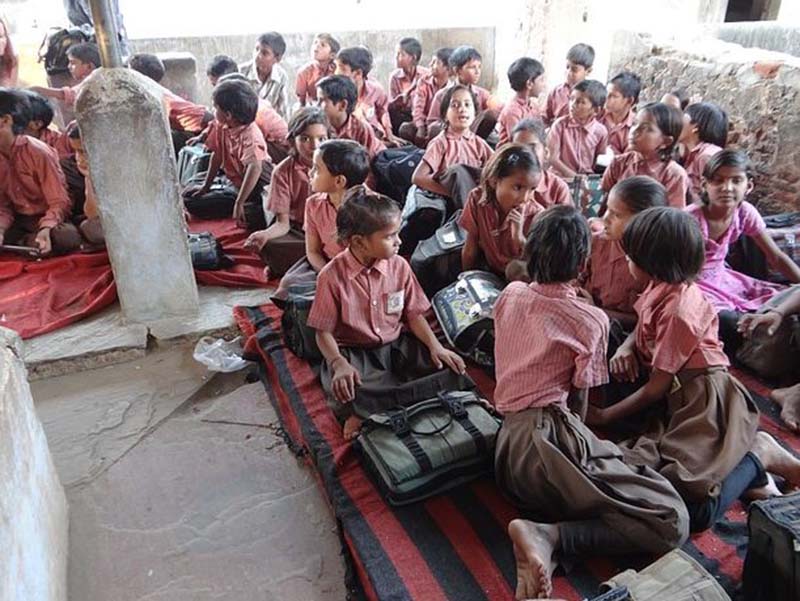(This is the third and last of a three-part analysis of the Government’s draft New Education Policy)
By MP Joseph
The Kasturirangan Committee’s draft New Education Policy (NEP) was released for ‘public debate’ by the Government on 30th May this year. As my two previous articles on the subject – the first of which focused on the Higher Education initiatives in the draft and the second on School Education – shows, the draft NEP has indeed generated quite some debate.
On higher education, the focus of the draft is on restructuring it unrecognizably, making it completely different from what we know. On school education it seems to have focused on change for the sake of change- the draft even recommends changing the name of the Ministry of Human Resource Development back to the ‘Ministry of Education’, the name it was known by till 1985, before it became the MHRD.
But the danger of the NEP is not in the way the document tinkers with names. They are childish and irrelevant, but not dangerous. The peril in the draft NEP is in the many latent dangers the document holds, not merely to education, but to India as a whole.
Firstly, the danger lies in the almost unnecessary emphasis the document pays to the language issue. It is as though the Kasturirangan Committee had been asked to draft a new language policy for the country, not a new education policy. So much is the emphasis, the draft NEP puts on the language issue, that one is left wondering if such unnecessary focus on language and its attempt to bring back the discredited 3-language formula, was an innocent foray into a minefield, or a more deliberate backdoor ploy to revive the dormant language problem.

Language is a very sensitive emotive issue. There are avant garde people who may think that with technology driven smart phones, google translations etc., available online, language will no longer be a barrier among people in future. But that future is a very very long way off. In the meantime, language – especially in the south and east of the country – can fan balkanizing trends. If that happens the Kashmir problem that we are facing today will seem like child’s play, in comparison.
To wit, it is foolishly dangerous to play with languages. It will simply be used to pit the south and east against the north. In a country already riven deliberately with differences, it would be playing with fire.
The second looming danger, latent in the draft NEP is the hideous attempt therein to realign the federal structure of India’s polity. Already the inroads made by repeated governments at the centre have changed what ought to have been a federal model of sharing of powers between the Centre and States into what is quaintly called the quasi-federal structure of our polity. Over the past years and especially after the BJP came to power five years ago, with its notions of a very centrist governance with Modi a Presidential Prime Minister – and Amit Shah a powerful Vice Presidential Additional Prime Minister waiting in the wings to take over – we have moved from a quasi-federal structure to a quasi-unitary structure of governance.
The Cambridge Dictionary describes quasi to mean, ‘used to show that something is almost, but not completely, the thing described’. Thus when we describe our constitution as quasi-federal, it means that the constitution is almost federal in its design, but not completely.

In the few years of the BJP rule, the country has moved from a quasi-federal structure to a quasi-unitary one, meaning that it is now unitary in practice, but not completely. The use of governors as agents of the ruling party in the 5 years of the first NDA rule is just one example of the thrust to a quasi-unitary mode of governing India.
After the 2019 elections, the move from a quasi-unitary governance to a full and unabashed unitary governance has gained pace. With a monstrous majority in the Lok Sabha and with small parties like the Biju Janatha Dal feeling the heat and kowtowing to the ruling party in the Rajya Sabha, the unitary structure of governance has further strengthened.
If the draft NEP is implemented it would perhaps be one of the last nails on India’s federal pretensions. We would then have moved away from a quasi-unitary model to a fully unitary model.
The draft NEP places incredible powers of money and influence in the hands of the Central Government in the matter of education. We must recall that education was a State Subject until the 42nd Amendment. Today it is on the Concurrent List. The tragedy of the Concurrent List is that once the Central Government legislates on a matter therein, then the States must follow that Legislation.
The NEP is strewn with many attempts at putting full powers on education in the hands of the central government. It starts from making the Prime Minister the Chairperson of the Rashtriya Siksha Ayog or the National Education Commission. However educated or well-read a Prime Minister is, the role of the Chairperson of a National Education Commission should go to an educator of eminence. It is not the role for a political person, however educated he or she may be. Today of course we have a Prime Minister who has some claims to having had a university education. What if tomorrow in the process of our democracy we should get as our Prime Minister a completely uneducated person. Would it not be a tragedy to have such a future PM sit as the Chair of a National Education Commission?
The powers that the draft NEP gives the central government in matters of funding, research, curriculum, pedagogy, recognition, etc. to cite a few, are overwhelming and is certainly against the country’s federal claims. The NEP will be a further step in destroying the little remnants of the federal nature of our polity and making it unitary.
A unitary structure may seem attractive to some. It may even be successful in the short run. But once it crosses a threshold – a threshold that with the divisive agenda already in place in the country can be very low – a unitary structure can only break the country. Fissiparous tendencies in Kashmir, Punjab, the North East and even in the South can get a boost if the NEP does not tailor itself to the wide diversity that this country presents.
Another neat trick that the NEP does is to claim that it will seek to bring in free and compulsory universal education for children in the age group of 3-18. The draft NEP claims that it will go far beyond the Right to Education Act which speaks of free and compulsory education only till the primary, and states that the NEP will extend free and compulsory education till Grade 12.

Sounds good? Indeed, it does. Sounds too good to be true? Indeed, it is.
With a sleight of hand, the document cleverly changes the definition of free and compulsory education by insisting that free and compulsory education only requires ensuring that there are sufficient free schools for those who want to attend. The definition of free and compulsory education as understood all over the world is then turned on its head by a sleight of the pen in defining it thus.
All over the world free and compulsory education means it is the responsibility of government to ensure that every child of school going age is in school. Governments all over the world implementing free and compulsory school education, put in place measures to ensure that every child of school going age, is in school. It is a mockery of that universal principle if India says that it has provided free and compulsory school education upto 18 years of age simply by claiming that it has arranged to provide free schools for any child that wants to go to school.
In a country where many poor children are brainwashed into thinking that schools are not for them, but only for the children of the rich, such a definition of free and compulsory schooling will lead to a decrease in Gross Enrollment Ratios in future years, particularly from the 6th to the 12th Grades.
In international forums, India would have to hang its head in shame if we redefine free and compulsory education as the draft NEP suggests. You do not alter the goal post to claim goals. That may give us temporary fame, but remember it is our prospective human resource that we are degrading. No country in the world has prospered without developing its human resource through universal free and compulsory school education.
Compulsory school education means what it says. Make school education compulsory for every child. How does a country ensure compulsory school education? Through putting in laws that punish truancy, ensuring that parents and children and the social milieu in which they live are sensitized on the need to send every child into schools and punishing schools that do not admit children of the poor, punishing truant teachers, punishing parents that do not send their children to schools. The NEP unfortunately is silent on these matters.
Perhaps the biggest danger of the New Education Policy is that it is not really a policy document, but a vision document. It is one thing to articulate a vision in a 500-page document and quite another to translate that vision into reality. The track record of the BJP government so far does not give us any indication of an ability to translate ideas into action. They have had a very disappointing track record in planning and implementation. Take the instance of demonetization, GST, Swatch Bharat etc. Failure in implementation of grandiose ideas has been a hall mark of the BJP.
So while great ideas and vision have been enunciated in this document, the chances that the document would get implemented looks slim.
Like our many institutions where it is fashionable to write out Vision and Mission Statements in Big Fat Bold Letters – and no one except the people who drafted them have any idea of what it means – I fear the NEP will also remain a document written in Big Fat Bold Letters and preserved for posterity, until another government 30 years down the line, decides to bring in a newer New Education Policy.
Disclaimer: The opinions expressed within this article are the personal opinions of the author. AlignIndia does not take any responsibility for the content of the article.
M P Joseph is a former Indian and UN Civil Servant. He belongs to the 1978 batch of the IAS and worked with the ILO in India and abroad for 20 years. He can be contacted on mpjoseph@hotmail.co.uk.


